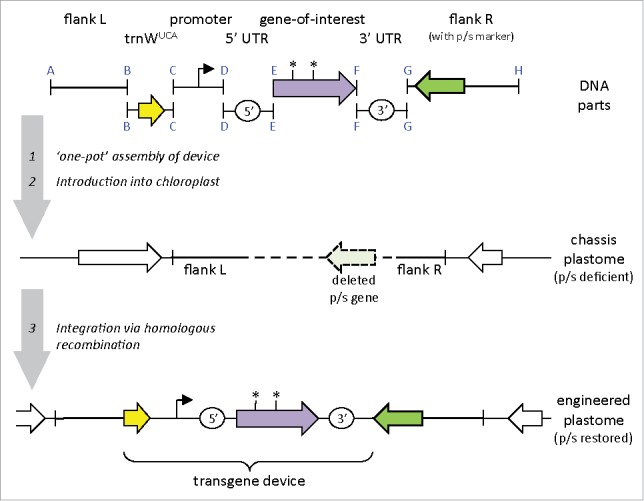Figure 3.

A synbio strategy for creating marker-free transgenic lines that also incorporate a biocontainment feature. Standardised DNA parts are assembled in order using Golden Gate to create the transgene device, with left (L) and right (R) flanking plastome elements (shown as bold lines) added for homologous recombination in the chloroplast. One element carries a wild-type copy of an essential photosynthetic (p/s) gene allowing phototrophic selection in the recipient chassis that lacks this gene. The synthetic gene-of-interest is codon-optimised and fused to promoter and untranslated region (UTR) parts. Biocontainment can be incorporated into the transgene by replacing one or more tryptophan codons with the UGA stop codon (*), thereby preventing function transfer of the gene to other microorganisms. Correct translation in the chloroplast is achieved by inclusion of a part carrying trnWUCA. This gene encodes an orthogonal variant of the chloroplast's tryptophan tRNA that recognises UGA.
